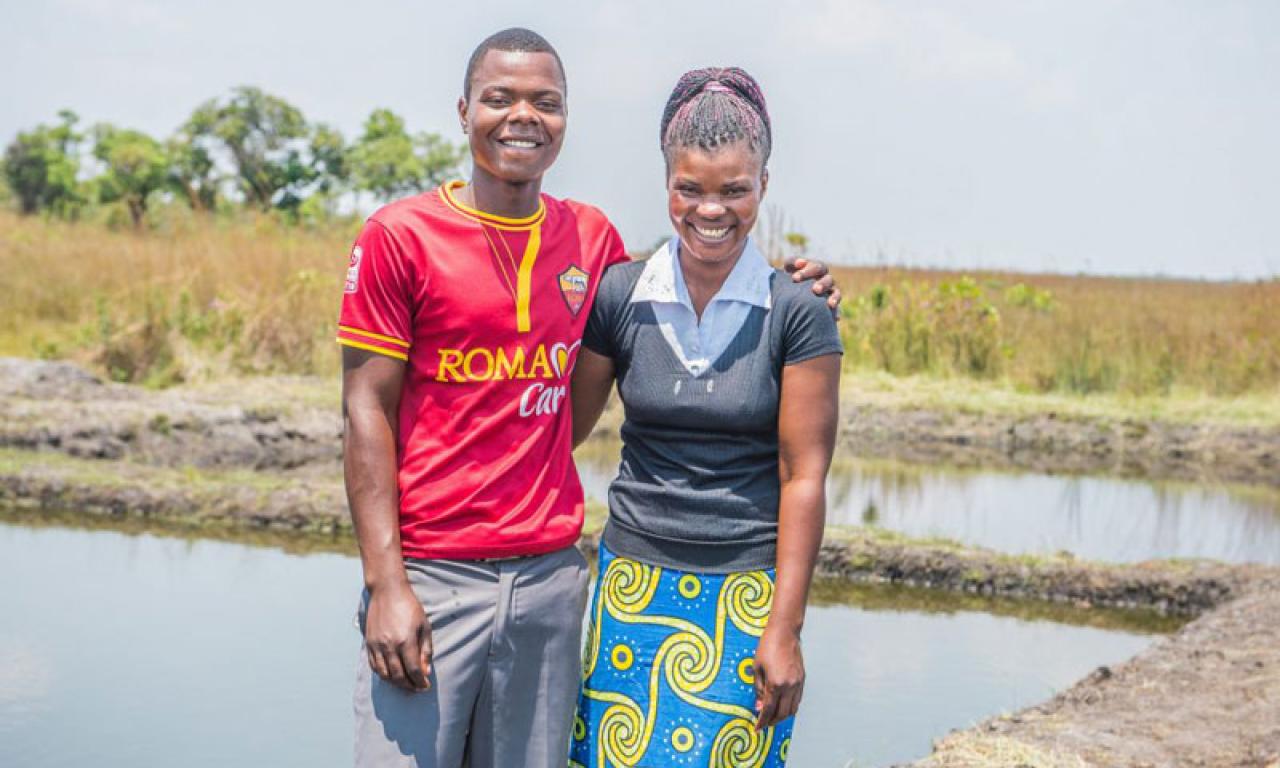
Zambia’s emerging aquaculture sector is set to be a key supplier of fish and other aquatic foods in sub-Saharan Africa. The sector already employs approximately 13,000 people. Its growth presents an economic opportunity for youth, creating jobs along value chains in diverse activities including fish farming, processing, and transport.
Zambia’s emerging aquaculture sector is set to be a key supplier of fish and other aquatic foods in sub-Saharan Africa. The sector already employs approximately 13,000 people. Its growth presents an economic opportunity for youth, creating jobs along value chains in diverse activities including fish farming, processing, and transport.
Approximately 60 percent of unemployed Zambians are young people between the ages of 15 to 35 years. The high unemployment rate among youth poses a substantial problem to the country’s future productivity, considering that Zambia has an extremely young populace—more than half the population is below the age of 18.
In the past two years, WorldFish’s Aquaculture Technical, Vocational, and Entrepreneurship Training for Improved Private Sector and Smallholder Skills (AQ TEVET) project, with funding provided by Norad and partner Musika, has encouraged the private sector to invest in smallholder aquaculture to develop value chains and increase the need for labor.
The project aims to facilitate the creation of sustainable employment opportunities for youth in rural areas of Zambia, specifically the Luapula and Northern Provinces, through the development of small and medium-sized business enterprises. Leveraging private sector resources and promoting youth inclusive business models is one proven method to reduce entry barriers for young people.
Located about 35 km from the provincial capital of Mansa is EUNIMOS, an aquaculture farm owned by youth farmer Collins Chongo. Working with the AQ TEVET project, Chongo profited from new private sector market linkages to quality fish seed and fish feed producers, which are necessary to sustain a successful fish farming enterprise. New input and output markets have helped his business prosper.
Chongo originally started his aquaculture business with three fish ponds, but he has since expanded to twelve ponds with an annual production capacity of 14.4 tons. He has employed ten other youths to assist in fish farming activities, five women and five men.
“The new market linkages have made it easier for me to expand my farming business. In my current production cycle, I have generated a revenue of ZMW600,000 or USD 28,571 from an investment of ZMW260,000 or USD 12,380. With the training and network that I have been exposed to, I am now planning to start producing other species, particularly catfish,” said Chongo.
Engaging youth along value chains

Key constraints to youth participation in value chains include limited access to operational inputs, underdeveloped technical and business skills, and a lack of knowledge on aquaculture opportunities. By developing the capacity of the private sector to provide resources and training, young people benefit and can capitalize on new opportunities.
Since receiving training under AQ TEVET, the hatchery operator Kasakalabwe Multipurpose Cooperative has employed eight young people to operate its catfish hatchery and manage various farm activities. The cooperative’s chairperson, Felix Mulenga, believes that young people efficiently deliver extension services to smallholder farmers around the district.
“I work with young people because they have a lot of energy required to construct a fish pond, and they are very efficient in providing extension services to farmers because they are very fast and resourceful,” said Mulenga.
Young people can help to sustainably harness the country’s aquatic resources and inland waters, which cover 20 percent of Zambia’s landmass but remain underutilized. Current fish production fails to meet demand, but improved value chains, access to inputs, and sufficient labor can start to bridge the supply-demand gap for holistic benefits.
“Luapula Province is a sleeping giant in the form of water resources that offer untapped potential to develop the local aquaculture sector and reduce unacceptable rates of youth unemployment. If we teach young people how to do aquaculture efficiently, no one will have to look for a job,” said Luapula Province Permanent Secretary, Charles Mushota.
Farmers in Luapula Province also called for the integration of youth into fish farming activities to develop a population that will efficiently manage aquaculture in the future, as the nation strives to increase food and economic security.
“I work with my children so that when I am not around, they can feed the fish and manage the ponds; they are taught to grow up understanding the fish farming business so that even if I die, they do not suffer,” said Alfred Saisa, a fish farmer in Mabumba, Mansa.
Acknowledgements
This is an initiative of WorldFish in partnership with Musika. This work was undertaken as part of the CGIAR Research Program on Fish Agri-Food Systems (FISH) led by WorldFish. Funding support for this work was provided by the Norwegian Agency for Development Cooperation (Norad) in the framework of the Aquaculture Technical, Vocational, and Entrepreneurship Training for Improved Private Sector and Smallholder Skills Project in Zambia.
